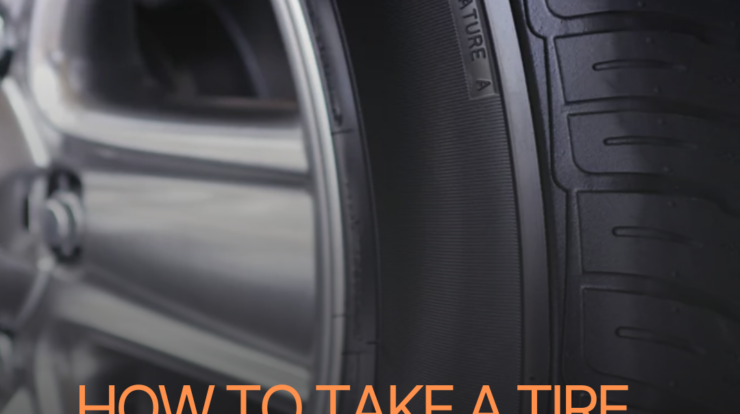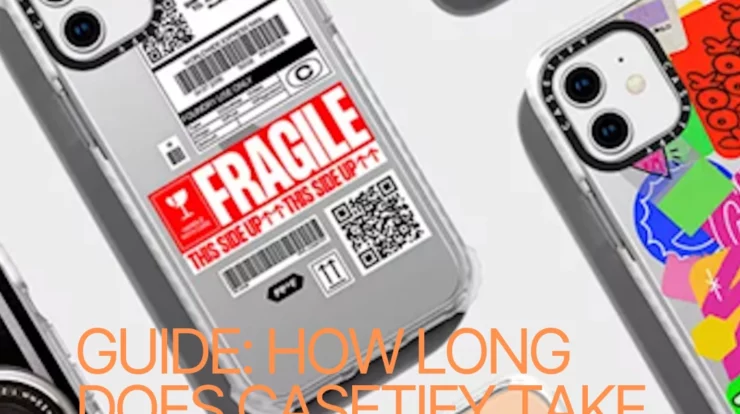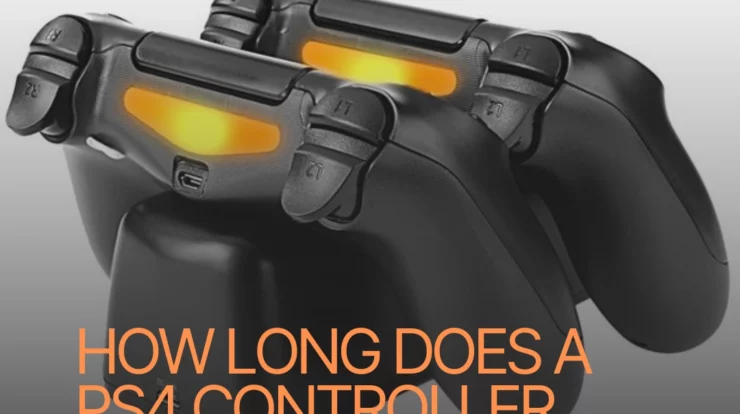
How to Take a Tire Off a Rim
I. Introduction
When it comes to vehicle maintenance, knowing How to Take a Tire Off a Rim is an essential skill. Whether you need to change a flat tire, replace a damaged one, or upgrade to a new set of wheels, understanding the proper tire removal process is crucial. In this comprehensive guide, we will take you through each step, ensuring you have the knowledge and confidence to tackle this task safely and effectively.
A. The Importance of Knowing How to Remove a Tire from a Rim
Removing a tire from a rim is not just about convenience; it’s also a matter of safety and cost-efficiency. Learning this skill can save you time and money, as you won’t have to rely on a mechanic for every tire-related issue.
B. Safety Precautions to Keep in Mind
Before we dive into the nitty-gritty of tire removal, let’s go over some important safety precautions. Your safety and the safety of those around you should always be a top priority when working on a vehicle.
II. Understanding the Tools and Equipment
Before you start removing a tire from a rim, it’s essential to gather the necessary tools and equipment. Here’s a list of items you’ll need:
| Tools and Equipment | Purpose |
|---|---|
| Lug wrench | For loosening lug nuts |
| Jack or lift | To raise the vehicle safely |
| Tire iron or bead breaker | For breaking the bead between the tire and rim |
| Tire machine (optional) | For easier tire removal and installation |
| Tire stand (optional) | To support the tire during removal |
| Safety goggles and gloves | For personal protection |
III. Preparing the Work Area
A. Finding a Suitable Location
Choose a flat, well-lit, and stable surface to work on. Avoid sloped or uneven terrain, as it can make the process more challenging and less safe.
B. Organizing Your Workspace
Keep your tools and equipment organized and within reach. This will save you time and prevent any unnecessary frustration during the tire removal process.
IV. Deflating the Tire
A. Importance of Deflating the Tire
Before you remove a tire from a rim, it’s crucial to deflate it completely. Deflating the tire makes the removal process easier and safer by reducing the pressure inside.
B. Step-by-Step Guide to Deflating Safely
- Locate the Valve Stem: The valve stem is a small rubber piece on the wheel. Unscrew the valve cap and keep it aside.
- Press the Valve Core: Using a valve core tool or a small screwdriver, press the valve core down. This will release the air from the tire.
- Remove the Valve Core: Once the air has been released, remove the valve core completely. Keep it in a safe place, as you’ll need it later when inflating the tire.
- Deflate the Tire: Allow the tire to deflate fully by pressing on the tire walls or using a tire pressure gauge to release any remaining air.
V. Removing the Wheel from the Vehicle
A. How to Safely Lift the Vehicle
Before you can start removing the tire from the rim, you need to lift the vehicle off the ground safely.
- Locate the Jack Points: Refer to your vehicle’s owner’s manual to find the recommended jack points. These are typically marked on the frame or undercarriage.
- Position the Jack: Place the jack in the correct position and pump it to lift the vehicle. Ensure it is secure and stable before proceeding.
B. Loosening Lug Nuts and Bolts
- Use the Lug Wrench: With the vehicle raised, use the lug wrench to loosen the lug nuts on the wheel but do not remove them completely at this stage.
- Safety First: Always work in a cross pattern (e.g., loosen one nut, then the one opposite it) to maintain balance and prevent accidents.
VI. Positioning the Tire
A. Proper Positioning for Easy Removal
Before you remove the tire, it’s essential to position it correctly for ease of removal.
- Locate the Tire’s Bead: The bead is the inner edge of the tire where it contacts the rim. Ensure the bead is facing upward.
- Use a Tire Stand or Jack: Place a tire stand or jack under the tire to support it during removal. This prevents the tire from rolling or falling over.
VII. Breaking the Bead
A. What is the Bead and Why it Needs to be Broken
The bead is a tight seal between the tire and the rim. To remove the tire, you need to break this seal.
B. Tools and Techniques for Breaking the Bead
There are several methods to break the bead. The most common tools and techniques include:
| Method | Description |
|---|---|
| Bead Breaker Tool | A specialized tool designed for this purpose |
| Manual Tire Iron | Using a tire iron or pry bar to break the bead |
| Hand Technique | Using your body weight to break the bead |
Note: Use caution when breaking the bead, as it can be physically demanding. Ensure the tire is securely positioned on the tire stand or jack.
VIII. Tire Removal Methods
Now that you’ve broken the bead, you’re ready to remove the tire from the rim. There are two main methods: manual tire removal and using a tire machine.
A. Manual Tire Removal
1. Lever Method
- Insert the Lever: Position a tire lever between the tire and the rim, near the bead.
- Apply Pressure: Apply downward pressure on the lever to pry the tire over the rim.
- Work Around the Tire: Continue this process around the tire until it’s completely removed from the rim.
2. Hand Technique
- Use Your Hands: With the bead broken, you can use your hands to push and pull the tire off the rim. This method requires strength and patience.
B. Using a Tire Machine
1. Overview of the Machine
A tire machine is a specialized piece of equipment designed to make tire removal and installation easier and more efficient. If you have access to one, here’s an overview of how it works:
| Step | Description |
|---|---|
| Mounting the Tire | Secure the wheel and tire assembly on the machine’s turntable. |
| Bead Breaking | The machine has a built-in bead breaker that simplifies this step. |
| Removal | The machine uses automated arms to dismount the tire from the rim. |
| Installation | After inspection and any necessary repairs, the machine assists in mounting the new tire. |
| Balancing | Some machines also have tire balancing capabilities, which we’ll cover later. |
2. Step-by-Step Operation
If you’re using a tire machine, follow the manufacturer’s instructions for safe and efficient tire removal and installation.
IX. Inspecting the Rim
With the tire removed, it’s an excellent opportunity to inspect the rim for any damage or wear. Here’s what to look for:
| Rim Inspection | What to Check |
|---|---|
| Cracks or Bends | Examine the rim for cracks, bends, or any structural damage. |
| Corrosion | Check for signs of corrosion, especially if the rim is made of aluminum. |
| Valve Stem Condition | Ensure the valve stem is in good condition and properly seated. |
| Bead Seat | Inspect the bead seat area for any debris or damage that could affect tire sealing. |
| Balance Weights | Look for any balance weights that may need adjustment or replacement. |
X. Removing Stubborn Tires
Sometimes, tires can be stubborn and challenging to remove, even after breaking the bead. Here are some tips for dealing with stubborn tires:
A. Dealing with Tires That Won’t Budge
- Apply Lubricant: Spray a tire lubricant or soapy water around the bead area to reduce friction.
- Use More Leverage: If using a manual method, try longer tire levers for additional leverage.
- Heat and Expansion: Heating the tire with a heat gun can cause it to expand slightly, making removal easier.
- Patience is Key: Take your time and apply steady pressure. Do not use excessive force, as it can damage the rim or tire.
XI. Safety and Best Practices
A. Importance of Safety During the Process
Throughout the tire removal process, prioritize safety:
- Always wear safety goggles and gloves to protect yourself from potential hazards.
- Use proper lifting techniques when handling the vehicle and tire equipment.
- Keep your work area well-ventilated, especially when using lubricants or a heat gun.
B. Best Practices for Tire Removal
- Follow the vehicle manufacturer’s instructions and specifications for torque when tightening lug nuts.
- Keep all tools and equipment clean and in good working condition.
- Dispose of old tires and any used materials in an environmentally responsible manner.
XII. Reinstalling the Tire
Now that you’ve successfully removed the tire, it’s time to prepare the rim for tire installation and put the tire back on.
A. Preparing the Rim for Tire Installation
- Clean the Rim: Ensure the rim is clean and free of any debris or residue.
- Inspect Valve Stem: Double-check the valve stem’s condition and alignment.
B. Step-by-Step Guide to Putting the Tire Back On
- Mount the Tire: Position the tire on the rim, ensuring the bead is correctly seated.
- Use Lubrication: Apply a tire mounting lubricant to make installation easier.
- Use a Tire Machine (Optional): If you have access to a tire machine, it can assist in mounting the tire efficiently.
- Push and Align: Push the tire onto the rim, ensuring it’s centered and aligned properly.
- Inflate Slightly: Inflate the tire slightly to help it seat on the rim.
- Double-Check Seating: Ensure that the tire’s bead is fully seated on the rim all the way around.
XIII. Inflating the Tire
A. Proper Tire Inflation Guidelines
Correct tire inflation is crucial for safety and performance. Refer to your vehicle’s manual or the tire manufacturer’s recommendations for the proper PSI (pounds per square inch) level.
B. Recommended PSI Levels
The recommended PSI levels for your tires can typically be found in the following places:
- Vehicle owner’s manual
- Inside the driver’s side door jamb
- On the tire sidewall (not recommended, as it displays the maximum pressure, not the recommended pressure)
Use a tire pressure gauge to ensure the tire pressure matches the recommendations.
XIV. Balancing the Tire
A. Understanding Tire Balancing
Balancing a tire ensures even wear, better handling, and a smoother ride. It involves adjusting the weight distribution around the rim.
B. Using a Tire Balancing Machine
If you have access to a tire balancing machine, here’s how to use it:
- Mount the Tire: Secure the tire on the machine’s balancer.
- Enter Data: Input relevant data, including the type of vehicle and tire size.
- Balance: The machine will spin the tire and indicate where balance weights should be added or adjusted.
- Apply Weights: Attach balance weights as indicated to achieve balance.
XV. Reattaching the Wheel to the Vehicle
With the tire properly inflated and balanced, it’s time to reattach the wheel to the vehicle.
A. Aligning the Wheel with the Lug Nuts
Position the wheel on the hub, ensuring that it aligns with the lug nut holes.
B. Properly Tightening the Lug Nuts
Follow these steps for tightening the lug nuts:
- Hand-tighten the lug nuts in a crisscross or star pattern to ensure even pressure.
- Use a torque wrench to tighten the lug nuts to the manufacturer’s recommended specifications. Over-tightening can cause damage.
XVI. Final Checks and Inspection
Before you consider the job complete, take some time to perform final checks and inspections.
A. Inspecting the Installed Tire and Rim
Double-check the tire and rim for:
- Proper alignment
- No visible damage or issues
- Correctly seated bead
B. Double-Checking Everything for Safety
Ensure all equipment is properly stowed, and the work area is clean and safe. Dispose of any used materials responsibly.
XVII. Summary
In summary, knowing how to remove a tire from a rim is a valuable skill that can save you time and money, while also ensuring your safety on the road. This comprehensive guide has covered each step of the process, from preparation to reinstallation, with a focus on safety and best practices.
XVIII. FAQs (Frequently Asked Questions)
A. What do I do if I don’t have the necessary tools?
If you don’t have the required tools, consider borrowing, renting, or purchasing them. Proper tools are essential for safe and efficient tire removal.
B. Can I remove a tire without a tire machine?
Yes, you can remove a tire without a tire machine using manual methods, as outlined in this guide. While a tire machine can make the process easier, it’s not mandatory.
C. How often should I balance my tires?
Balancing your tires is typically recommended when they are mounted on the rims, during tire replacement, or if you notice any vibration or uneven wear. Follow the manufacturer’s recommendations for specific intervals.
D. What should I do if I encounter a stuck lug nut?
If a lug nut is stuck, you can try using penetrating oil, a breaker bar for more leverage, or a lug nut removal tool. Be patient and avoid excessive force to prevent damage.
E. Can I reuse the same tire on a different rim?
In some cases, it may be possible to reuse a tire on a different rim, but it’s essential to ensure that the tire size and type are compatible with the new rim. Consult a professional if you are unsure.
XIX. Troubleshooting Common Issues
A. Tire Damage During Removal
If the tire is damaged during removal, it may not be suitable for reuse. Inspect the tire carefully, and if there are signs of significant damage or sidewall punctures, it’s safer to replace it.
B. Bead Not Breaking Properly
If the bead doesn’t break easily, apply more lubrication or use a bead breaker tool with caution. Avoid using excessive force to prevent damage to the tire or rim.
C. Uneven Tire Wear
Uneven tire wear can be caused by various factors, including improper inflation, misalignment, or suspension issues. Address the underlying problem to prevent future uneven wear.
XX. Conclusion
Congratulations! You’ve now mastered the art of removing a tire from a rim. This valuable skill can save you time and money, enhance your vehicle’s performance, and keep you safe on the road. Remember to prioritize safety, follow best practices, and refer to this guide whenever you need to tackle this essential task. Happy wrenching!






